- Home
- T. J. English
Westies Page 3
Westies Read online
Page 3
That didn’t seem to cut any ice with Sullivan.
There was a long period of silence as Canelstein and his kidnappers drove across the 59th Street bridge to Queens. The driver maneuvered his way through traffic along Queens Boulevard, past the Sunnyside railyard, past Long Island City, past Hunters Point Avenue. From the back seat, Canelstein could see the familiar sight of Calvary Cemetery, with its rolling hills of tombstones. That was the last thing he recognized.
“Are you sure you don’t have any money?” It was the driver, speaking for the first time. He turned completely around to ask his question, taking his eyes off the road.
Canelstein just shook his head. He couldn’t think of anything more to say.
A few minutes later the car pulled into a dark lot across the street from the Calvary Cemetery. It was after midnight now, and as Canelstein and Morales were taken from the car, the only illumination was from the headlights aimed at a brick warehouse wall. They were led across the debris-littered lot, stood up against the wall and searched one last time.
Suddenly, Morales turned around, pointed at his chest and started to shout, “Go ahead, motherfuckers. Right here! Shoot me right here!”
That’s when three gunshots rang out, with two of the bullets striking Morales in the face.
Canelstein started to run. There were three more gunshots, two of the bullets passing right through his abdomen and the third lodging in some bone marrow near his left armpit.
By the time the cops got to Canelstein they were lucky to get anything out of him. Not only had he been shot three times, but he was nearly in a state of shock. All he’d wanted was a drink and a night out, he told the cops. He didn’t cheat anybody or do anything bad. A pickup, that’s all he wanted, a nice single girl to bring home for the night.
What Canelstein did not know—what he could not have known—was that he had walked right into the middle of an old-fashioned gang war with roots on the West Side of Manhattan, in a neighborhood known as Hell’s Kitchen.
From the descriptions Canelstein gave them, the cops were able to ID Coonan and Sullivan. Just twelve days earlier, in March, there had been another killing in the same precinct, no more than a few minutes drive from where the Canelstein/Morales shooting had taken place. The victim’s name was Bobby Lagville—and Coonan and Sullivan were the prime suspects in that one too.
On the morning of April 5, 1966, the day after the Canelstein/Morales shooting, four detectives from the 108th Precinct in Queens were dispatched to the home of William “Billy” Murtha, a suspected crime partner of Coonan’s who lived at 412 East 50th Street in Manhattan. What the cops didn’t know was that Murtha had been the driver on the night Canelstein and Morales were shot. When they arrived at Murtha’s small studio apartment, he was still in his underwear. They told him to wake up and get dressed. They wanted to talk to him about a shooting.
As Murtha began to put on his clothes, Detective Martin Logan noticed there was a shoe on the floor that was about four sizes bigger than the ones Murtha was wearing. He looked around the apartment and heard a dog barking on the other side of a closed bathroom door. He took his gun out and told Murtha to open the door.
When Logan peeked inside he saw the silhouette of a man standing behind the shower curtain.
“Come out of there with your hands away from your body,” he commanded.
The curtain was pulled part way back and six-foot-two-inch Eddie Sullivan stepped out. Like Murtha, he was dressed only in his underwear.
Logan’s partner slapped a set of handcuffs on Sullivan and led him out of the bathroom. Logan stepped towards the shower, his gun still poised, and pulled the shower curtain all the way back. In the shower, hunched all the way down and also in his underwear, was nineteen-year-old Jimmy Coonan.
At the 108th Precinct young Coonan was polite but firm. He swore he knew nothing about the Canelstein/Morales shooting. Even when the cops informed him that Charles Canelstein had lived and would probably be able to identify his assailants, Coonan didn’t budge—not yet, anyway.
To the cops in Queens it was no big deal. As far as they knew, Jimmy Coonan was just a petty crook from Manhattan, and they wouldn’t have been surprised if his victim was too. There had been over 150 homicides in Queens already that year. To them, this was just one more—and a seemingly insignificant one at that.
As of yet, they had no idea that the Canelstein/Morales shooting was the latest salvo in the Hell’s Kitchen gang wars, a long tradition that, over some sixty-five years, had done more for the undertaking business in Manhattan than any criminal event in twentieth-century history.
Although most of the gangster element on the West Side knew young Jimmy Coonan was having a war with Michael “Mickey” Spillane, leader of the Hell’s Kitchen rackets in 1966, not many had known just how serious it was until the Canelstein/Morales incident. While Coonan, Sullivan, Murtha, and the man identified as the fourth person in the car, Jimmy Gallagher, were being held in custody, a story spread through the neighborhood. It went something like this: Spillane had called in two hit men from Texas to eliminate Coonan and his sidekick, Sullivan. The boys had found out about it, hunted the hit men down, and taken them out to Queens, where they were given a gangland-style farewell.
Never mind that Jerry Morales, a small-time burglar who’d once done a long stretch in San Quentin Prison, was from Los Angeles, not Texas. Whatever Morales had said to Eddie Sullivan at the Pussycat Lounge was enough to make Sullivan think he and Canelstein were hitmen from Texas.
Since Spillane and Coonan had gone public with their feud, there had been lots of threats and accusations. One rumor was that Spillane had called hit men in from Boston. Another had him cutting a deal with Little Bobby Lagville, a neighborhood kid, to kill just Eddie Sullivan. That rumor was taken seriously enough that Bobby Lagville disappeared from the neighborhood one evening. Later he was found dead out in Queens with six bullet holes in his body.
Coonan knew Spillane had boxed himself into a corner as far as violence was concerned. Dark and drop-dead handsome, with a courtly manner, Spillane was an oldtime gentleman gangster with a much admired sense of loyalty to the neighborhood. He could not be seen to be condoning violence against a person from Hell’s Kitchen or it would make him look bad in the eyes of his “legitimate” friends. That’s why Spillane had taken a contract out on Eddie Sullivan instead of Jimmy Coonan. Sullivan was from the East Side. He was fair game.
Little Bobby Lagville had been asked to do the killing because he was a close friend of Coonan’s. “Get rid of Sullivan,” Spillane supposedly told Lagville, “then we can call a truce. Otherwise, your friend Coonan’s gonna be history real soon.” When Jimmy Coonan and his buddies heard about this, they thought it meant Lagville was on Spillane’s side. So they gave him a ride to 5th Street between 47th and 48th avenues, just across the East River in Long Island City. That’s exactly where the police found the body, lying in a river of blood in the middle of the street at 4:30 A.M. on March 23, 1966.
Usually, that’s how the Coonan/Spillane Wars were waged—in the quiet of the night on some dark street or in some back alley where there were few witnesses.
Sometimes, however, emotions boiled over. One popular story in the saloons and gambling dens of Hell’s Kitchen had it that one afternoon Spillane and Coonan were seen exchanging words right on 10th Avenue. They both pulled guns and traded fire, just like an old-fashioned Western shoot-out.
Another time, it was reported, Spillane was headed to a late-night crap game on 46th Street between 11th and 12th avenues. He was with a group of seven or eight neighborhood buddies, including a young Tommy Collins and Julius “Dutch” Grote. Suddenly somebody opened fire from the roof up above. They all ducked for cover as bullets sprayed down like rain.
“Holy shit!” somebody shouted, “Who the fuck is that?”
They squeezed into the entryway of a tenement, pinned against the glass doors as the bullets hit the street and ricocheted off a nearby warehouse wa
ll.
Spillane leaned forward, peering up towards the roof. “It’s that bug Coonan. He’s got a machine gun!”
They had to stay like that for a while until Coonan disappeared. Then they scampered off to their dice game.
Most folks in Hell’s Kitchen figured it was all about business. Spillane not only controlled the neighborhood policy games, but he was the area’s primary bookmaker. Any neighborhood bets on sporting events or anything else of interest went through him. He also had influence with the unions, where various kickback rackets flourished, and all the neighborhood dice and card games. Plus, there was loansharking and his thriving robbery and hijacking operations. All in all, he was a well-rounded guy.
In the old days, the neighborhood rackets sprang out of one centralized scam like the illicit liquor trade or the waterfront. Now it was more of a hustle, and anyone who hoped to maintain control over a sprawling empire of gambling, loansharking and more would either have to do it through intimidation or, like Spillane, by establishing an impressive power base through legitimate as well as criminal connections.
But Mickey Spillane hadn’t acquired his reputation overnight. As with earlier neighborhood gangsters, he’d had to build it slowly through assorted extortions. With Spillane, the extortion of choice had always been kidnapping. His modus operandi was simple enough. A wellconnected neighborhood merchant might be shoved into the backseat of a car as he left his place of business at the end of the day. From there, he would be taken to an apartment or maybe to the rear of Spillane’s own White House bar at 45th Street and 10th Avenue. Phone calls would be made to the person’s business partner or some other associate demanding ransom. Sometimes there might even be violence involved.
To an outside observer, this might have seemed like a high-risk proposition, given that most of the victims were people who knew Spillane. In some cases, they might even have lived down the block or around the corner from Spillane’s own West 50th Street apartment. These people could easily have ratted to the police.
But Spillane knew that was unlikely. He was relying on something called the West Side Code, a tradition so sacred that even noncriminal types saw that it was adhered to. Simply stated, it went something like this: Under no circumstances does anyone talk to the cops. To do so would mean certain castigation within the community. It might also mean something very bad could happen to a member of your family.
The West Side Code wasn’t based on any criminal impulse, per se. It was more a sign of solidarity against outside forces; a way to show loyalty and “build character.” But over the years the gangsters were able to make the Code their own, and people like Mickey Spillane always knew they could bank on it.
Spillane never really liked the kidnap-for-ransom racket, unless it involved other mobsters. That was good business. But to kidnap somebody’s uncle or cousin and hold him at gunpoint was uncivilized. As soon as he was in a position to give it up, he did so, and put out the word to all his underlings that kidnapping neighborhood people was now forbidden.
But Mickey Spillane could not rewrite his past. Like all the prominent Hell’s Kitchen gangsters who had preceded him, he’d had to do some pretty nasty things to get where he was. And some people just weren’t going to let him forget about it.…
It had been a kidnapping not unlike all the others. Years before the Canelstein/Morales shooting, John Coonan, a neighborhood accountant who ran a tax office on West 50th Street, was snatched late one night and taken to the White House Bar. He was held there and pistol-whipped by Spillane and a few others. After a couple hours, a payment was made and he was let go.
After the kidnapping, Coonan was willing to let things slide. But his son Jimmy was not. For years, Jimmy would remember the humiliation his father had suffered at the hands of Mickey Spillane. It would fester inside like an illness, and he would swear time and time again that he would never be a victim like his father was. Never.
Given Coonan’s strong feelings on the matter, it was a testament to his patience that he was, for the most part, willing to lie in wait. Oh, there were daily harassments, like machine gun fire from rooftops and occasional shootouts in the street. But that was just to prove he couldn’t be pushed around. Coonan knew Spillane could not be removed overnight. He was too popular, too well-connected. If he removed Spillane now, no one would see him as the natural successor. He was much too young. What he had to do was make a name for himself first; muscle in on as much of Spillane’s territory as he could; establish important alliances of his own, possibly with the Italians.
Coonan knew this would take time. But he was willing to build slowly to achieve his larger ambitions.
In the meantime, the plan was to fuck with Mike Spillane as much as possible.
* * *
Bounded on the south by 34th Street, on the north by 59th, and stretching from 8th Avenue west to the Hudson River, few neighborhoods have contributed more to the saga of New York City street life than Hell’s Kitchen. Along the neighborhood’s eastern flank stands Times Square, the city’s world-renowned theater district, with its staggering array of Broadway and Off-Broadway theatres, restaurants, and movie palaces—not to mention a thriving drug, pornography, and prostitution trade. To the west, the Hudson River and the waterfront, once the most lucrative cargo and passenger port in the United States and an unending source of income for racketeers.
A number of popular legends concerning the origin of the name “Hell’s Kitchen” have now become part of the city’s permanent record. Some say it came from a German couple named Heil who owned a diner popular with local dockworkers in the post-Civil War years. Somehow Heil’s name was mispronounced as Hell, with Heil’s Kitchen thus becoming Hell’s Kitchen.
Another has it that two Irish cops, one a veteran and the other a rookie, stood watching a small riot on West 39th Street. “This place is hell itself,” the rookie is supposed to have said.
“Hell’s a mild climate,” responded the veteran. “This is Hell’s Kitchen, no less.”
Whatever the origins of its name, there have always been certain inalienable traditions in Hell’s Kitchen, traditions that grew out of the neighborhood’s reputation as a cauldron of urban activity. At their best, these traditions have produced the cream of a proud and thriving metropolis. Doctors, priests, politicians, scientists, judges, athletes. People who used their working-class roots as the foundation for a life of compassion, service, and achievement.
But over the decades, as Hell’s Kitchen was buffeted by forces that would shape and reshape the city, the neighborhood became known for another kind of tradition—a tradition of gangsterism. This was the tradition inherited by Jimmy Coonan, Mickey Spillane and the others who now found themselves caught up in the Coonan/Spillane Wars. It was a rich tradition, proudly cultivated by successive generations of tough guys, with a lineage rooted deep in the soil of New York City’s past.
At the turn of the century, the area was largely an Irish and German enclave. Its most dominant physical features were the noisy 9th Avenue elevated railway, which carried more passengers than any railway line in the city, and the Hudson River Railroad, which carried freight and livestock along 11th Avenue, or “Death Avenue” as it was known to most West Siders because of the dust, congestion, and dangerous rail traffic.
In 1910, a privately funded report by a group of social workers painted a graphic picture of the area at its most wretched. Hell’s Kitchen, they wrote, is characterized by “dull, square, monotonous ugliness, much dirt, and a great deal of despair.” Their account included a description of what life was like for young kids, who spent most of their time on the bustling cobblestoned streets hawking newspapers, fighting, picking pockets, swimming in the Hudson River, or flying pigeons from tenement roofs.
There was a closeness within the community, however, that evaded the social workers. Because of their proximity to the docks and railroad lines, the people of Hell’s Kitchen felt as if they were constantly under siege from transient forces, and they rea
cted accordingly. Those who stayed put cultivated a fierce loyalty to the neighborhood as protection against the outside world. The area’s most prominent social institutions—the church, the political clubhouse, the neighborhood saloon—were more than just gathering places. They were fortresses of stability in the midst of what was largely a migrant community.
Throughout the early years of the twentieth century, by far the most common form of activity for a young male was involvement in some sort of gang. Of all the gangs in the city, those on the West Side of Manhattan were known to be the most audacious. At night, local cops had to walk the beat in “strong-arm squads” of four or five to avoid being bushwhacked by hoodlums. Street gangs like the Parlor Mob, the Gorillas, and the Tenth Avenue Gang flourished amongst the poverty and urban squalor so characteristic of the neighborhood.
The most powerful of the early Hell’s Kitchen gangs was the Gophers, so named because they usually met in tenement basements. At their peak in 1907, they were believed to have as many as 500 members. Primarily an Irish gang, they burglarized shops along the gaslit streets at night, ruled the saloons and pool halls, and staged frequent raids on the docks and the Hudson River Railroad, later renamed the New York Central Railroad.
The Gophers were themselves a throwback to an earlier era of gangsterism when, in the late nineteenth century, New York City was at the mercy of nearly a dozen ruthless street gangs concentrated in the notorious Five Points area of lower Manhattan. Comprised largely of Irish immigrants who had fled their homeland during and after the Great Potato Famine, the Five Points gangs staged outlandish daytime robberies, engaged in nighttime gang wars and remained the bane of law enforcement throughout the latter part of the late 1800s. The Dead Rabbits, the Plug Uglies, and the Kerryonians were known and feared, but the most violent of all were the Whyos, led by the likes of Red Rocks Farrell, Googy Corcoran, and Baboon Connolly.

 Havana Nocturne
Havana Nocturne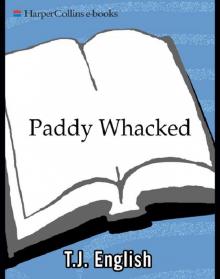 Paddy Whacked
Paddy Whacked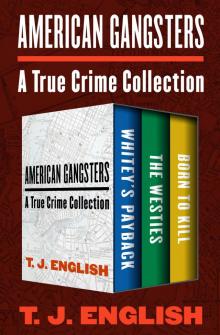 American Gangsters
American Gangsters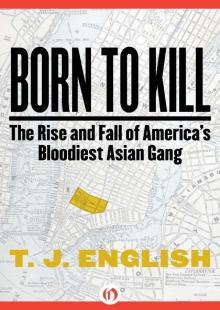 Born to Kill
Born to Kill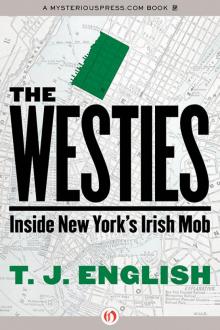 Westies
Westies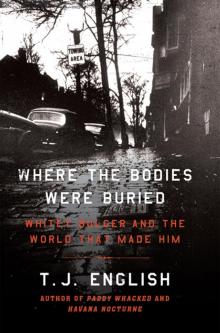 Where the Bodies Were Buried
Where the Bodies Were Buried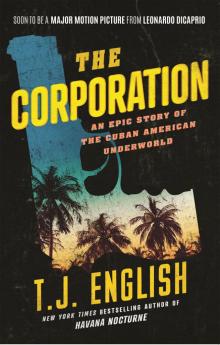 The Corporation
The Corporation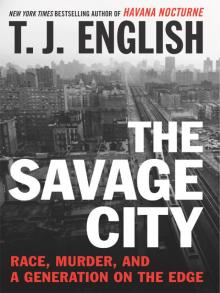 The Savage City
The Savage City